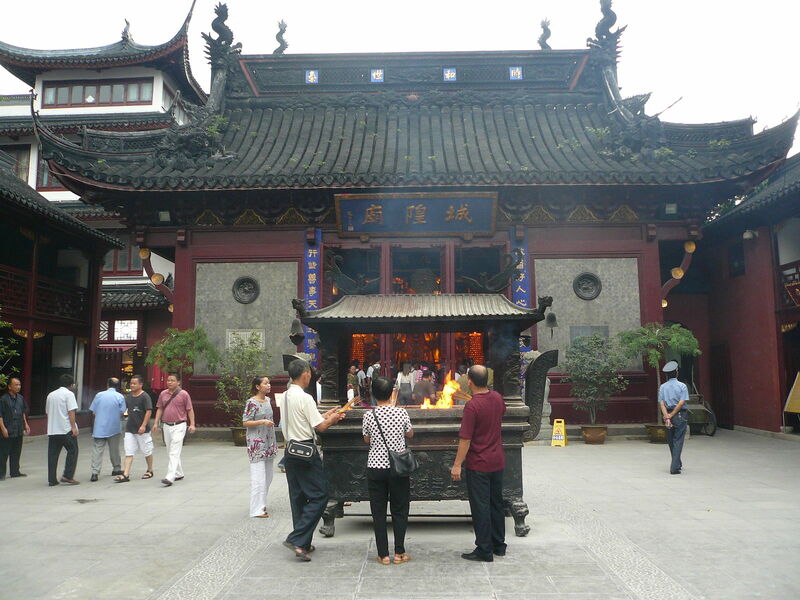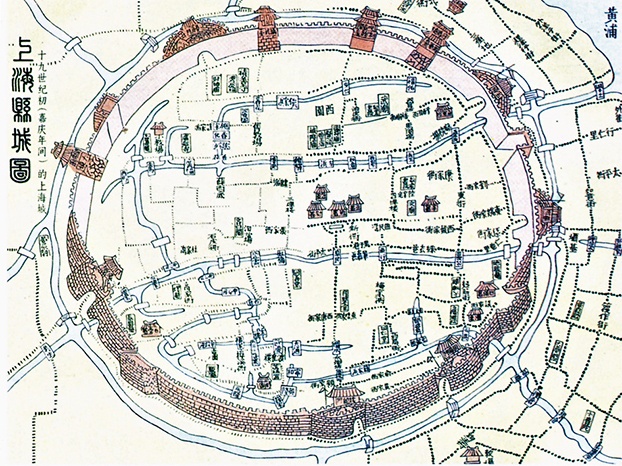The Old City of Shanghai
Before the Treaty of Nanking Shanghai was a walled circular city with a protective moat encircling its perimeter. Buildings and gardens comprised the interior, with a county office at the city center. Temples peppered the city, which provided open spaces for public gatherings and events. The City Temple, designed in 1559 was an important location for government ceremonies. The garden still exists today, although heavily altered from its original design. Members from the merchant guilds who met at the gardens had tremendous influence on the structure and economy of the city.
By the Qing dynasty, the old city had been restructured into a more urban and commercial environment, under the influence of the Merchant Guilds who held power in the city. This power in the hands of the Guilds was a stark departure from the old traditional consolidation of design and planning power in a central government. The new planning structure and commercially focused layout of Shanghai in the Qing dynasty set up the perfect environment for outside planning committees to have executive power in Shanghai’s future form. Urban density already was focused around the waterfront, with the Merchant Guilds taking advantage of the river for profit.

